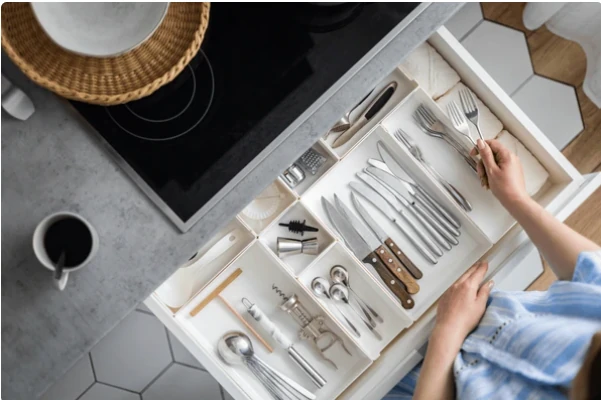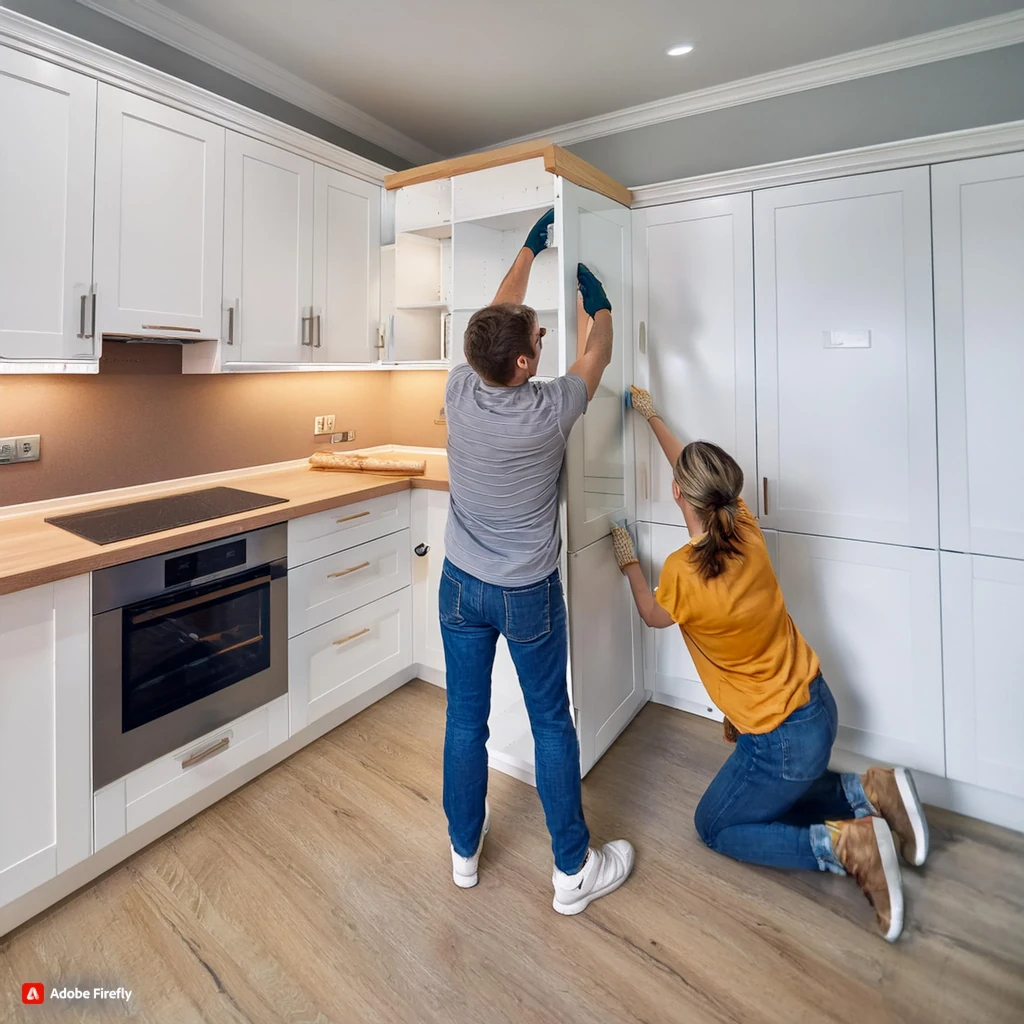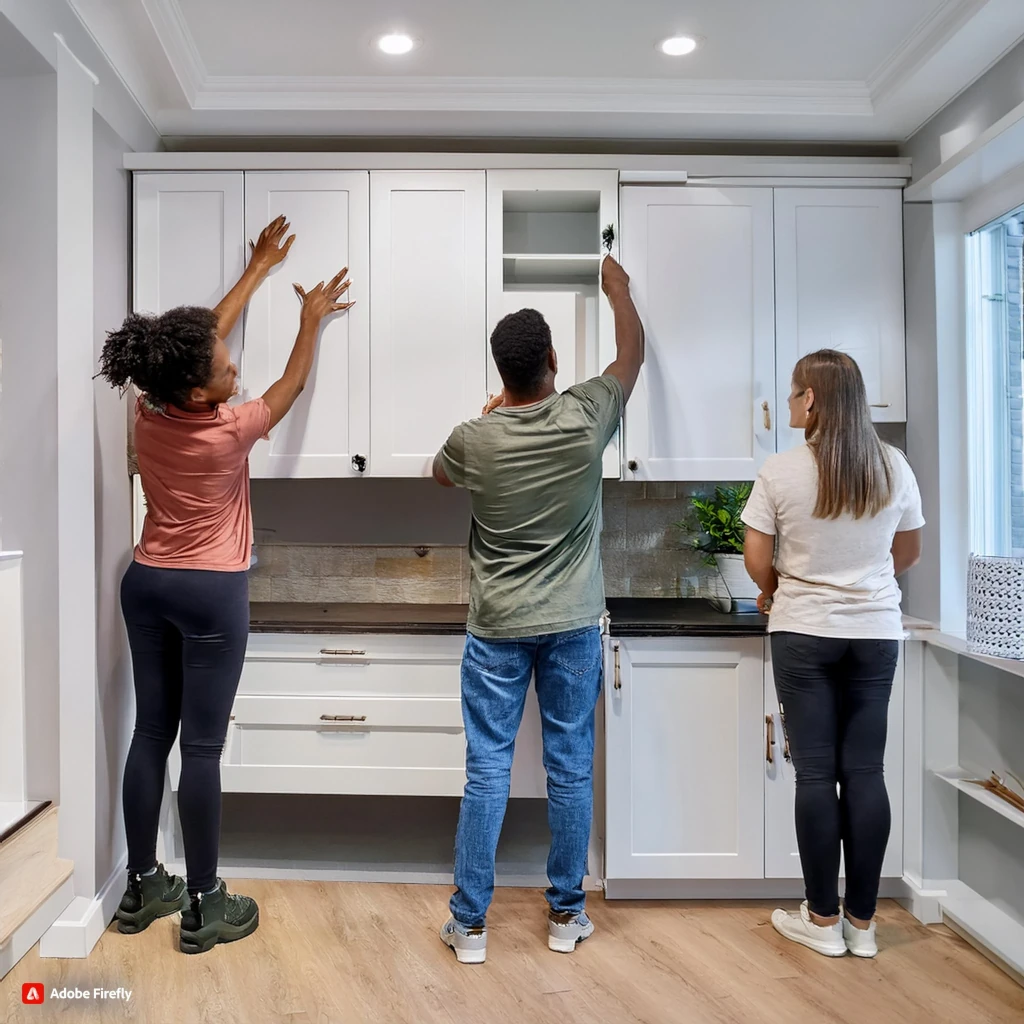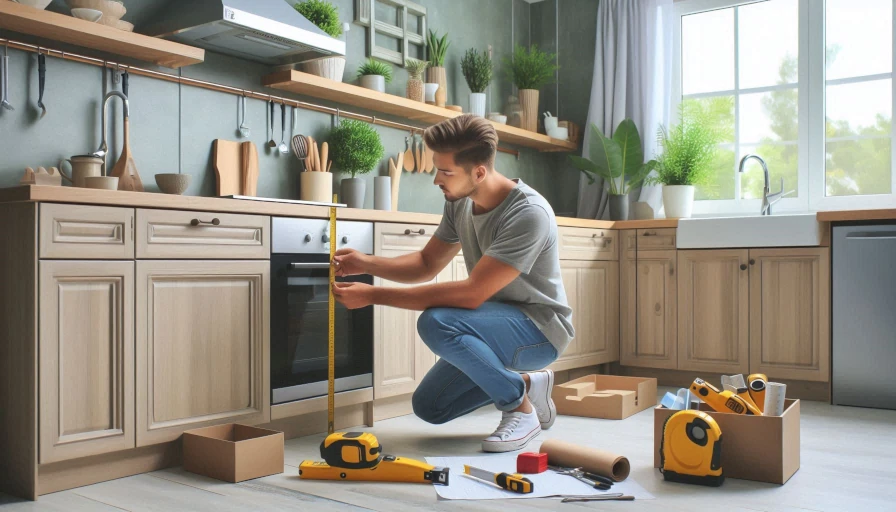Summer Deals! Free shipping over $2999

Introduction: Effective storage solutions can make a significant difference in the functionality and organization of your kitchen. This article provides practical DIY tips for optimizing your cabinet space, helping you make the most of your kitchen cabinets without a major overhaul.
Content:
1. Assessing Your Storage Needs:
a. Evaluate Current Usage:
- Inventory Check: Take stock of what’s currently stored in your cabinets. Identify items that are frequently used and those that are rarely touched.
- Problem Areas: Note any areas where clutter accumulates or where items are difficult to access.
b. Set Priorities:
- High-Use Zones: Designate areas for items you use daily, such as pots, pans, and utensils. These should be easily accessible.
- Low-Use Zones: Store less frequently used items, like seasonal cookware or special occasion dishes, in less accessible areas.
2. DIY Storage Solutions:
a. Cabinet Organizers:
- Adjustable Shelves: Install adjustable shelving to create flexible storage options for varying heights of items.
- Pull-Out Racks: Use pull-out racks for spices, cans, and other small items to make them easier to access.
- Lazy Susans: Incorporate lazy Susans in corner cabinets to maximize space and accessibility.
b. Drawer Organizers:
- Custom Dividers: Use drawer dividers to separate utensils, cutlery, and kitchen tools. Customizable dividers can be adjusted to fit your needs.
- Tiered Trays: Implement tiered trays to keep smaller items organized and visible.
3. Maximizing Vertical Space:
a. Overhead Storage:
- Hanging Racks: Install hanging racks or rails on the inside of cabinet doors for additional storage of items like pot lids, utensils, or cleaning supplies.
- High Shelves: Utilize the top shelves of cabinets for storing infrequently used items, such as holiday dishes or bulky appliances.
b. Wall-Mounted Solutions:
- Wall Shelves: Add wall-mounted shelves for additional storage space, perfect for displaying frequently used items or adding extra storage for small kitchen appliances.
- Magnetic Strips: Use magnetic strips for knives or metal kitchen tools, freeing up drawer space.
4. Improving Accessibility:
a. Pull-Out Trays:
- Installation Tips: Install pull-out trays or shelves in lower cabinets to make accessing items at the back easier. These trays slide out smoothly and make it simple to find what you need.
- DIY Kits: Purchase DIY pull-out tray kits or build your own using available hardware.
b. Drawer Bins:
- Custom Fit: Use bins or baskets in drawers to group similar items together, making it easy to locate and retrieve them.
- Labeling: Label bins to further streamline organization and help family members quickly find items.
5. Regular Maintenance:
a. Declutter Periodically:
- Routine Checks: Regularly assess and declutter your cabinets to maintain an organized space. Remove expired items and donate unused kitchen tools.
- Rearrange: Periodically rearrange items to keep the most frequently used items within easy reach.
b. Cleaning:
- Interior Cleaning: Clean the inside of your cabinets regularly to remove dust and crumbs. Use a gentle cleaner and cloth to avoid damage.
- Organizers: Clean and sanitize drawer organizers and cabinet inserts to keep them in good condition.
Conclusion: Optimizing cabinet storage space can enhance the functionality of your kitchen and make everyday tasks more efficient. By implementing these DIY tips, you can create a more organized and accessible kitchen without the need for extensive renovations. Enjoy a clutter-free and functional space that works for your lifestyle.





